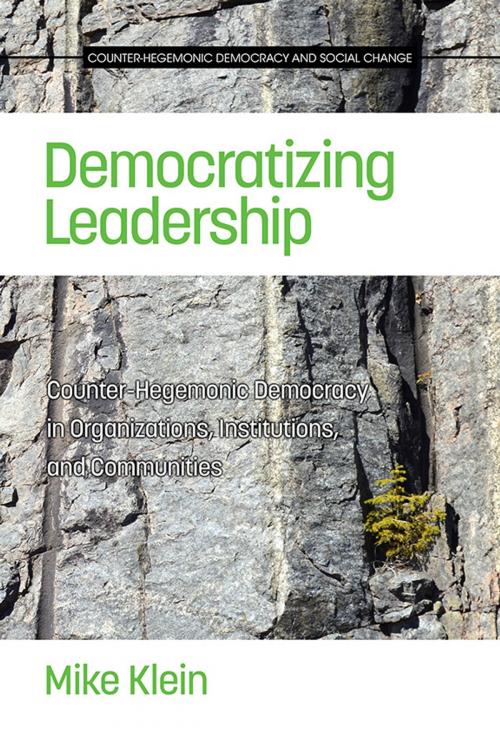Democratizing Leadership
Counterhegemonic Democracy in Communities, Organizations and Institutions
Business & Finance, Human Resources & Personnel Management, Organizational Behavior, Nonfiction, Social & Cultural Studies, Political Science, Government, Democracy, Management & Leadership, Leadership| Author: | ISBN: | 9781681233352 | |
| Publisher: | Information Age Publishing | Publication: | December 1, 2015 |
| Imprint: | Information Age Publishing | Language: | English |
| Author: | |
| ISBN: | 9781681233352 |
| Publisher: | Information Age Publishing |
| Publication: | December 1, 2015 |
| Imprint: | Information Age Publishing |
| Language: | English |
Democratizing Leadership: Counter?hegemonic Democracy in Organizations, Institutions, and Communities promotes leadership in the democratization of culture to counter the current hegemony of domination and cultivate an alternative hegemony of collaboration. It is premised on a leadership framework for decision?making rooted in democratic voice and leading to collective action. This broad peacebuilding prescription for individual and collective agency accounts for the constructive role of conflict in democratic pluralism, and the need to develop practices and structures that prevent violent conflict in order to advance positive peace. This theory addresses the contexts of deliberative, agonistic, and revolutionary democratic frameworks. Democratizing Leadership is informed by three qualitative case studies described in rich detail. First Bank System Visual Art Program, In the Heart of the Beast Theater's May Day Ritual, and The Minnesota Alliance of Peacemakers exemplify the practice of democratizing leadership. These diverse settings include corporate banking during 1980's deregulation, an annual community May Day parade, and an informal alliance of peacemaking organizations. Leadership in each case promotes authentic voice, encourages decision?making with integrity, and advocates for responsible collective action.
Democratizing Leadership: Counter?hegemonic Democracy in Organizations, Institutions, and Communities promotes leadership in the democratization of culture to counter the current hegemony of domination and cultivate an alternative hegemony of collaboration. It is premised on a leadership framework for decision?making rooted in democratic voice and leading to collective action. This broad peacebuilding prescription for individual and collective agency accounts for the constructive role of conflict in democratic pluralism, and the need to develop practices and structures that prevent violent conflict in order to advance positive peace. This theory addresses the contexts of deliberative, agonistic, and revolutionary democratic frameworks. Democratizing Leadership is informed by three qualitative case studies described in rich detail. First Bank System Visual Art Program, In the Heart of the Beast Theater's May Day Ritual, and The Minnesota Alliance of Peacemakers exemplify the practice of democratizing leadership. These diverse settings include corporate banking during 1980's deregulation, an annual community May Day parade, and an informal alliance of peacemaking organizations. Leadership in each case promotes authentic voice, encourages decision?making with integrity, and advocates for responsible collective action.















